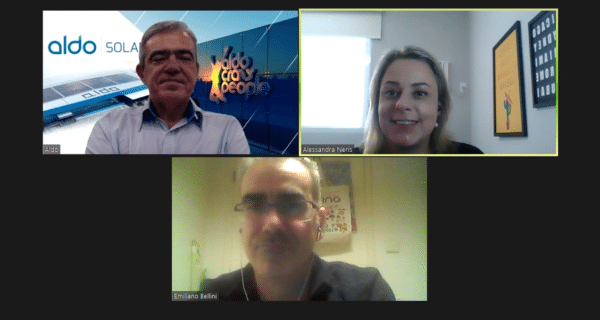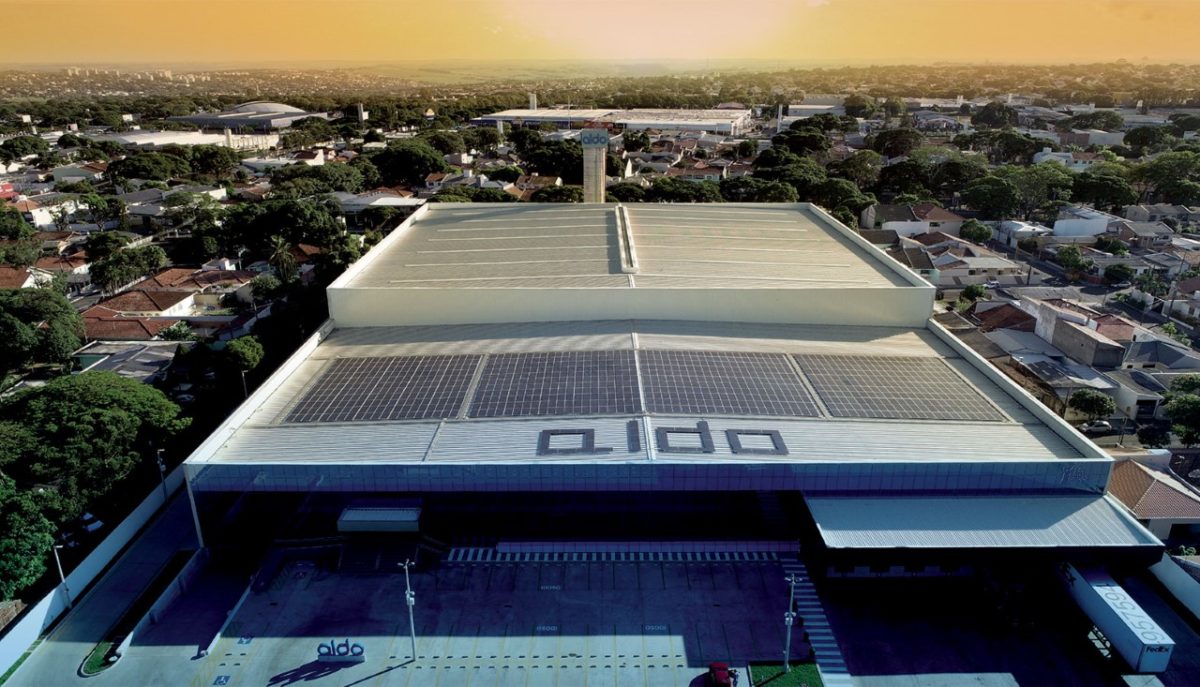“With the financial problems of our competitors, Aldo became the largest PV product distributor in Brazil this year”, said the president of Brazil's largest PV product distributor and system integrator, Aldo Pereira Teixeira, in an interview with pv magazine. “Currently, our market share is around 35 to 36 percent.”
Aldo currently focuses on the sale of residential, commercial, and industrial photovoltaic systems and only 3 percent of the company's revenue is concentrated on projects with a power greater than 1 MW, in which remote self-consumption is a priority. The situation of distributed generation in Brazil is still very promising, Pereira Teixeira added. “Brazil has 89 million consumer units and only 330,000 photovoltaic systems connected to the grid; we have a huge space to keep growing.”

Image: Aldo
The Covid-19 crisis only caused a sharp drop in the market in the months of April and May and it has now already recovered, reaching the same numbers as last year, he said. “And in the fourth quarter the numbers are much higher than last year. Aldo's turnover will grow 50% this year.”
The distributed generation segment, which in Brazil includes all solar power generators not exceeding 5 MW in size, should experience in 2020 a 50% growth compared to 2019. “The forecast is that by the end of 2020, the market will reach 4.5 GW of installed power with 360,000 consumer units, with 180,000 new units added this year alone,” Aldo's head specified. “For 2021, the estimated growth should be at least another 4 GW and 360,000 new consumer units and, for 2022, we estimate it will be another 5 GW of installed power and another 400,000 new consumer units.”
The recent regulatory changes introduced by the Brazilian government, in his view, affected the market mainly in terms of photovoltaic system prices, which fell 40%. “But panel prices have also dropped in China and globally,” he added. “And luckily Brazil decided to eliminate the import tax on the panels, which allowed it to maintain a good breakeven in the investment of 40 or 45 months.” So far, however, the so-called “ex-tarifários”, which reduced the panel import tax by 12%, has had no impact in terms of increased sales.
This is because the government has limited the cost, insurance and freight (CIF) value of this equipment in reais, which has suffered due to the exchange rate variation, with the dollar at the highest rates ever seen. “In the case of inverters, on the other hand, the rate reduction was 14% and this reduction had a positive impact on the final price because the values were not linked to the CIF,” he said. At the moment, what is impacting the final value is the cost of international freight, which has a direct impact on CIF. Although there is now a favorable dollar, freight is what hinders the reduction of values. “The forecast for commercial growth in the sale of panels using the reduction in the rate of the ex-tarifários should happen in the second quarter of 2021, when the international maritime freight costs are expected to be normal,” he added.
The government's action, according to Pereira Teixeira, was adequate not only to solve the import tax issue, but also to answer the question of the unfavorable exchange rate, which is affecting the entire Brazilian economy. “The government could quickly enable the approval of a bill that would serve as a legal framework for the distributed generation in Brazil, bringing even more certainty and, consequently, greater growth to the sector,” he said.
Popular content
Underlining the difficulties of the residential segment with respect to the commercial and industrial segments in Brazil, the Aldo CEO said the main problem remained the dissemination of information about the technology. “Greater education would allow many homeowners to know that they can take care of their expenses and at the same time the environment, allowing more water to stay in the dams and reducing pollution,” he said.
As for project financing, historically Brazil has never had such a low-interest rate, with the Selic rate (Brazil's basic interest rate) of 2.0% per year. “This is the lowest rate in decades,” he noted. “With lower interest rates than those currently practiced, the Brazilian financial system favors financing to be more accessible for residential and commercial projects.” The conditions are thus very advantageous and guarantee even more development for the sector, he added. “Today, at Aldo Solar, 45% of all sales are made through financing from the financial system.”
When asked if Brazil could become a country that manufactures photovoltaic components, Pereira Teixeira said that the country did not have a semiconductor industry and, therefore, the manufacture of panels would not make much sense. “The same manufacturers that already exist in Brazil have to import all raw materials from Asia,” he said. “In that sense, we can become more product assemblers than true producers.” For this reason, Brazilian photovoltaic products, including inverters, can be 30% more expensive than those imported from China.
Regarding the quality levels of the Brazilian photovoltaic market, Teixeira Pereira said that this issue was a priority for the distributed generation business, where there are no contracts with the state or auctions of any kind. “Aldo's main suppliers are JinkoSolar, Trina, SMA, Fronius, Fimer, Refusol, Growatt, and also BYD, which we know has a panel factory here in São Paulo and also sells batteries,” he said. “We always select quality and value to make projects that have to last between 25 and 30 years.”
According to his estimates, the Brazilian market will soon have a 70 percent majority share of monocrystalline PERC panels, while polycrystalline products will fall further to have a 30 percent share. These weeks Aldo is launching the new high-power modules from major Chinese manufacturers such as Jinko and Trina, albeit in small versions, with a power of around 440 W, which can be used in roof projects. “These modules are a little more expensive than conventional panels, but allow for a lower final installation cost.” Undoubtedly, these panels will be the most sold in Brazil from the first quarter of 2021 and should have an 80% share because they are made exclusively for distributed generation and serve the vast majority of roof projects in Brazil, Teixeira Pereira explained. “These panels are more efficient, lighter and have a longer service life and are already in line with the 182 mm and 210 mm cell technology trend.”
Regarding the possibility of expanding the company's business abroad, Pereira Teixeira said that it would take at least 10 years for the Brazilian market to become saturated. “And until then, we want to continue growing and maintain our leadership here,” he commented. “Brazil is still taking its first steps in solar energy.”
This content is protected by copyright and may not be reused. If you want to cooperate with us and would like to reuse some of our content, please contact: editors@pv-magazine.com.



2 comments
By submitting this form you agree to pv magazine using your data for the purposes of publishing your comment.
Your personal data will only be disclosed or otherwise transmitted to third parties for the purposes of spam filtering or if this is necessary for technical maintenance of the website. Any other transfer to third parties will not take place unless this is justified on the basis of applicable data protection regulations or if pv magazine is legally obliged to do so.
You may revoke this consent at any time with effect for the future, in which case your personal data will be deleted immediately. Otherwise, your data will be deleted if pv magazine has processed your request or the purpose of data storage is fulfilled.
Further information on data privacy can be found in our Data Protection Policy.